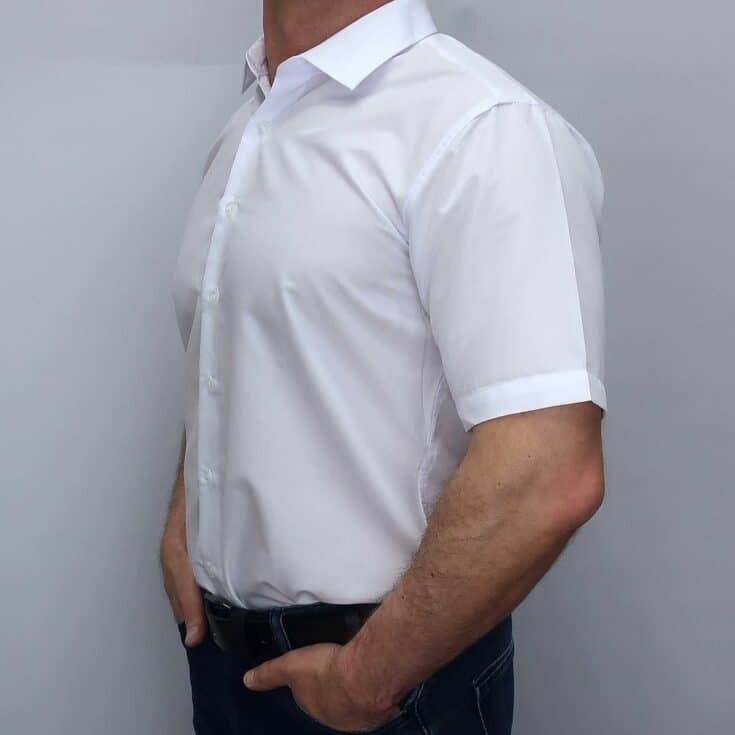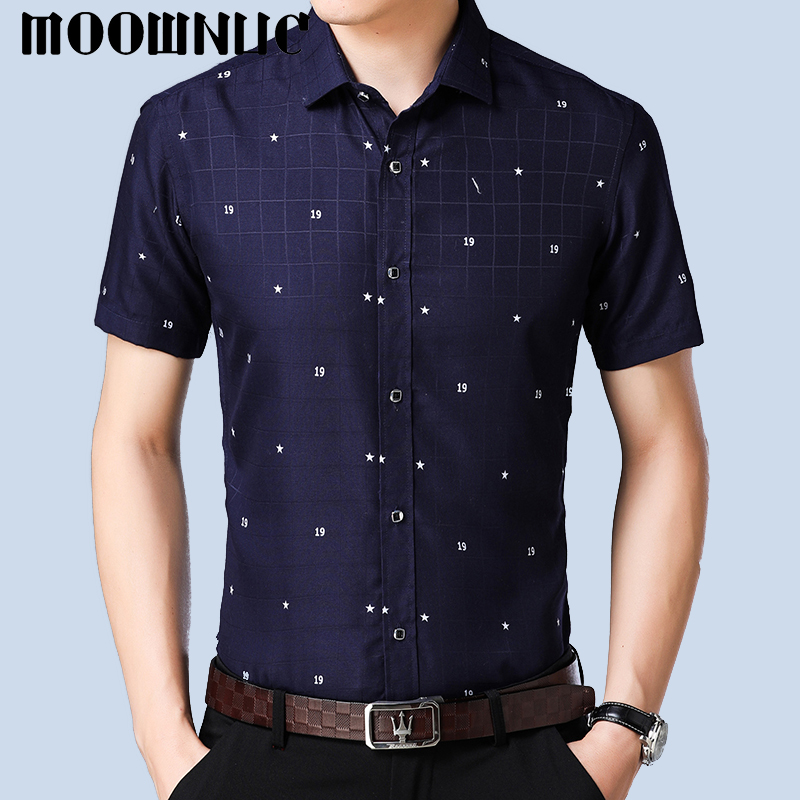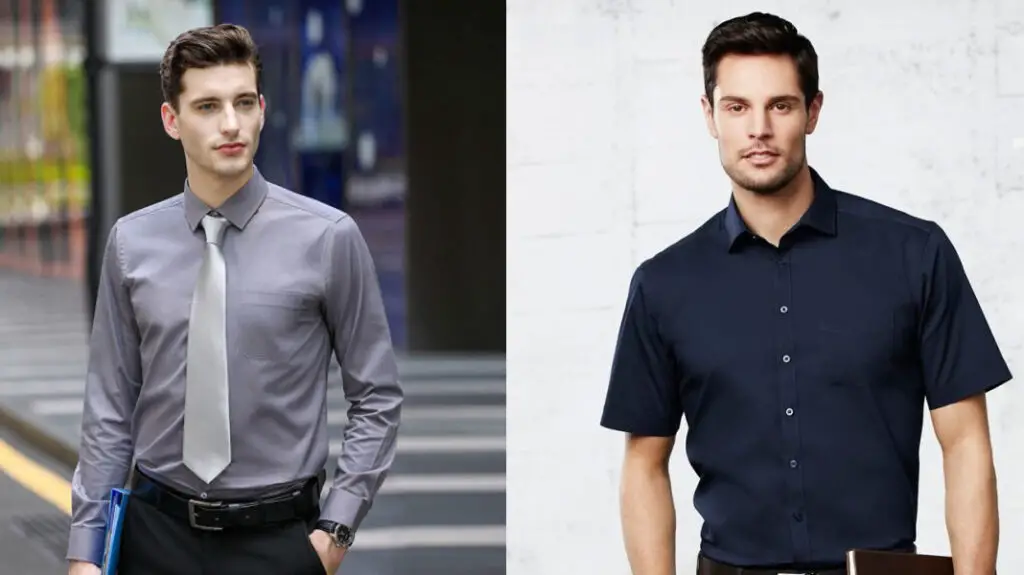Are short sleeve shirts business casual? The answer, surprisingly, isn’t a simple yes or no. Workplace appropriateness hinges on a complex interplay of industry norms, company culture, and the specific shirt itself. From crisp button-downs to relaxed polos, the style and fabric significantly impact their suitability. This guide navigates the nuances of short sleeve shirts in business casual settings, offering insights into appropriate styles, pairings, and alternatives.
We’ll explore the spectrum of professional environments, from tech startups embracing a more relaxed dress code to law firms maintaining a stricter standard. Understanding these variations is crucial for making informed decisions about your attire. We’ll delve into specific shirt types, fabric choices, and styling techniques to help you confidently navigate the business casual landscape while maintaining a polished and professional image.
Workplace Appropriateness of Short Sleeve Shirts

The acceptability of short-sleeve shirts in a business casual setting is highly dependent on a complex interplay of factors. While generally considered more relaxed than long-sleeved shirts, their appropriateness hinges on industry norms, company culture, and the specific context of the workplace. Understanding these nuances is crucial for maintaining a professional image and adhering to unspoken or explicitly stated dress codes.
Factors Influencing Short Sleeve Shirt Acceptability
Several key elements determine whether a short-sleeve shirt is suitable for a business casual environment. These include the style of the shirt itself (e.g., polo shirt versus a graphic tee), the overall dress code of the workplace, and the specific industry in which the company operates. Furthermore, the individual’s role within the company and the nature of their daily interactions also play a role. A senior executive might be expected to dress more formally than a junior team member, even within the same business casual environment.
Industries Where Short Sleeve Shirts Are Generally Acceptable and Not Acceptable
Short-sleeve shirts are more commonly accepted in industries with a more relaxed dress code. Tech startups, advertising agencies, and some design firms often embrace a less formal atmosphere where short-sleeve button-downs or polo shirts are perfectly acceptable. Conversely, industries with a more traditional or client-facing focus, such as law firms, financial institutions, and certain areas of healthcare, generally favor long-sleeved shirts or even suits as a more professional standard. The level of client interaction and the perceived image of the company often dictate this stricter dress code.
Impact of Company Culture and Dress Codes on Short Sleeve Shirt Acceptability
Company culture significantly influences the appropriateness of short-sleeve shirts. A company with a casual and collaborative work environment might readily accept short-sleeved shirts, even in roles involving client interaction. However, a company with a more formal and hierarchical structure is more likely to have stricter dress codes that would disallow short-sleeved shirts, particularly in client-facing roles or senior positions. Explicit dress codes, whether written or verbally communicated, provide clear guidelines. However, even in the absence of a formal dress code, observing the attire of colleagues and superiors can provide valuable insights into the accepted norms of the workplace.
Short Sleeve Shirt Appropriateness Across Various Professional Settings
| Professional Setting | Short Sleeve Button-Down | Polo Shirt | T-Shirt |
|---|---|---|---|
| Tech Startup | Generally Acceptable | Generally Acceptable | Potentially Acceptable (depending on company culture) |
| Law Firm | Generally Unacceptable | Generally Unacceptable | Unacceptable |
| Educational Institution (Professor) | Acceptable (depending on the institution and role) | Acceptable (depending on the institution and role) | Unacceptable |
| Financial Institution | Generally Unacceptable | Generally Unacceptable | Unacceptable |
Types of Short Sleeve Shirts and Their Suitability
Choosing the right short-sleeve shirt for a business casual setting requires careful consideration of style, fabric, and color. The key is to maintain a professional appearance while still expressing personal style. Different shirt types offer varying levels of formality, and understanding these nuances is crucial for making appropriate choices.
Short Sleeve Shirt Styles and Formality
Short-sleeve shirts come in a variety of styles, each possessing a different level of formality. Polos, for example, generally fall in the middle ground. Their collared design and button closure offer a more polished look than a t-shirt, making them suitable for many business casual environments. Button-down shirts, while often associated with long sleeves, also exist in short-sleeve versions. These offer a more formal appearance than polos, especially in finer fabrics. Henley shirts, characterized by their buttoned placket at the neckline, present a slightly more relaxed yet still presentable option, suitable for less formal business casual settings. T-shirts, however, are generally too informal for most business casual workplaces.
Suitable Fabrics for Business Casual Short Sleeve Shirts, Are short sleeve shirts business casual
The fabric of a short-sleeve shirt significantly impacts its suitability for business casual wear. Natural fibers like cotton and linen are breathable and comfortable, making them ideal for warmer climates. Cotton offers durability and versatility, coming in various weights and weaves, from lightweight pique (often used in polos) to heavier broadcloth (more suitable for button-downs). Linen, known for its breathability and wrinkle resistance, lends a sophisticated touch, though it can be more prone to wrinkling than cotton. Blends of cotton with synthetic fibers like polyester can offer enhanced wrinkle resistance and durability, making them a practical choice for frequent wear. Avoid fabrics that are excessively shiny, sheer, or flimsy, as these detract from a professional appearance.
Impact of Shirt Color and Pattern on Professionalism
Color and pattern choices play a crucial role in conveying professionalism. Solid colors, particularly in neutral tones like navy, white, light blue, or gray, are generally the safest bet for business casual settings. These colors project a sense of competence and reliability. Subtle patterns, such as small checks or stripes, can add a touch of personality without being overly distracting. However, avoid bold patterns, loud colors, or graphic prints, as these can appear unprofessional. The overall effect should be one of understated elegance.
Tips for Choosing Appropriate Short Sleeve Shirts for Business Casual Settings
Choosing the right short-sleeve shirt involves several key considerations. Here are some essential tips:
- Prioritize quality fabrics: Opt for shirts made from durable, high-quality materials that will hold their shape and look professional.
- Choose appropriate styles: Polos and button-down shirts are generally safer choices than henleys or t-shirts for most business casual environments.
- Select neutral and subtle colors: Stick to solid colors or subtle patterns in muted tones.
- Ensure a proper fit: The shirt should fit comfortably without being too tight or too loose. A well-fitting shirt enhances your overall appearance.
- Consider the context: The level of formality acceptable in your workplace might vary. Observe your colleagues’ attire to gauge the appropriate level of dress.
- Maintain cleanliness and good condition: Ensure your shirts are clean, wrinkle-free, and free of any visible damage.
Styling Short Sleeve Shirts for Business Casual

Mastering the art of business casual with short sleeve shirts requires a nuanced understanding of appropriate pairings and accessories. While the shirt itself forms the foundation, the overall effect hinges on carefully chosen complementary pieces that elevate the look from casual to professional. This section explores effective strategies for achieving a polished and appropriate business casual style using short-sleeve shirts.
Appropriate Pairings for Short Sleeve Shirts
The key to successfully incorporating short-sleeve shirts into a business casual wardrobe lies in selecting appropriate bottoms and outerwear. Avoid pairing them with overly casual items like jeans or athletic shorts. Instead, opt for tailored trousers or chinos in neutral colors like navy, gray, or khaki. These provide a more sophisticated base for the shirt. A well-fitting blazer, in a complementary color or texture, can add a layer of professionalism and sophistication, particularly for more formal business casual settings. The blazer should be structured and well-tailored to maintain a polished appearance. Consider materials like linen or cotton blends for a breathable and stylish summer look.
Accessorizing Short Sleeve Shirts for a Professional Look
Accessories play a crucial role in transitioning a short-sleeve shirt from casual to business casual. A leather belt in a dark brown or black adds a touch of formality and pulls the outfit together. The belt buckle should be understated and avoid overly flashy designs. While ties are generally associated with long-sleeve shirts, a carefully chosen knit tie can work with a short-sleeve shirt in certain contexts, particularly if the overall outfit is more formal. The tie should be slim and made of a lighter material such as silk or linen to avoid looking overly heavy. A high-quality watch, with a simple design, adds a sophisticated touch. Avoid overly large or ostentatious watches; a classic leather strap complements the overall business casual aesthetic.
Appropriate Footwear to Complement Short Sleeve Shirts
Footwear choices significantly impact the overall impression of a business casual outfit. Avoid sneakers or sandals. Instead, opt for loafers, oxfords, or boat shoes in leather or suede. These offer a balance of comfort and formality. The color of the shoes should complement the overall color palette of the outfit, often coordinating with the belt and other accessories. For example, brown leather loafers pair well with khaki chinos and a navy short-sleeve shirt. Darker shoes, such as black oxfords, might be appropriate for a more formal business casual setting.
Creating a Visually Appealing and Professional Outfit
Consider this example: a crisp, light blue cotton short-sleeve shirt with a subtle, tonal check pattern. This shirt is paired with dark gray tailored chinos, a dark brown leather belt with a simple silver buckle, and dark brown leather loafers. A simple, classic wristwatch with a brown leather band adds a refined touch. The overall effect is clean, sophisticated, and undeniably business casual. The shirt’s light color provides a refreshing summer look while maintaining a professional image, thanks to the structured chinos and classic accessories. The subtle check pattern adds a touch of visual interest without being distracting. The careful selection of accessories, specifically the belt and watch, enhances the professional look, tying the ensemble together seamlessly.
Alternatives to Short Sleeve Shirts in Business Casual Attire
Short sleeve shirts, while acceptable in some business casual settings, aren’t always the most versatile or appropriate choice. A wider range of options offers greater flexibility and allows for a more polished or professional appearance depending on the context. Exploring alternatives enhances your business casual wardrobe and provides more choices for different occasions and personal styles.
Several alternatives to short-sleeve shirts offer a more polished or versatile look within a business casual environment. These options vary in formality, allowing for adjustments based on the specific workplace culture and the day’s events. Choosing the right alternative depends on factors such as the level of formality required, the season, and personal preference.
Formal Alternatives to Short Sleeve Shirts
Long-sleeved button-down shirts are a classic and widely accepted alternative to short-sleeved shirts in business casual settings. They offer a more formal and polished look compared to their short-sleeved counterparts. The added formality makes them suitable for client meetings, presentations, or days when a more professional image is desired. Materials like cotton, linen, or chambray offer varied textures and breathability. Subtle patterns like stripes or checks can add visual interest without compromising professionalism. Alternatively, a well-fitting sweater, such as a merino wool or cashmere cardigan, adds a layer of sophistication and warmth, suitable for cooler environments. A fine-knit sweater can be layered over a collared shirt for a polished and refined business casual look.
Comparison of Formality Levels
Short-sleeved shirts generally fall at the lower end of the business casual formality spectrum. While acceptable in many relaxed workplaces, they might be considered less formal than long-sleeved shirts or sweaters. Long-sleeved button-downs, particularly those in solid colors or subtle patterns, occupy a higher level of formality. Similarly, sweaters, especially those made of high-quality materials like cashmere, elevate the overall look and suggest a more polished, sophisticated approach. The choice depends heavily on the specific company culture and the individual’s role.
Situations Favoring Alternative Options
Alternative options are preferred over short-sleeved shirts in several situations. For example, client meetings or important presentations often necessitate a more polished appearance, making long-sleeved shirts or sweaters preferable. Similarly, workplaces with a more conservative dress code may explicitly discourage short sleeves. Colder weather naturally favors long-sleeved options or layered looks, offering both warmth and professional style. In situations requiring a higher level of professionalism or formality, long-sleeved button-downs or sweaters consistently provide a more appropriate and impressive look.
Decision-Making Flowchart for Business Casual Attire
The following flowchart illustrates a decision-making process for selecting appropriate attire:
Start → Is the setting formal? (Yes/No) → Yes: Choose long-sleeved shirt or sweater. No: Is the weather warm? (Yes/No) → Yes: Consider short-sleeved shirt (check workplace culture). No: Choose long-sleeved shirt or sweater. → Consider personal style and comfort. → Choose outfit. → End
Visual Representation of Appropriate and Inappropriate Styles: Are Short Sleeve Shirts Business Casual

Understanding the visual aspects of business casual attire is crucial for making informed choices. This section provides concrete examples of both appropriate and inappropriate short-sleeve shirt outfits, highlighting the subtle yet significant differences that determine workplace suitability. By analyzing these examples, one can develop a stronger sense of professional style.
Appropriate Short-Sleeve Shirt Outfits for Business Casual
The following examples illustrate how short-sleeve shirts can be incorporated successfully into a business casual wardrobe. The key is to choose high-quality materials, classic styles, and complementary accessories.
- Outfit 1: A crisp, light blue linen short-sleeve shirt paired with charcoal gray chinos and brown leather loafers. The shirt features a classic button-down collar and a tailored fit. Accessories include a brown leather belt and a simple, understated watch. This outfit exudes a relaxed yet polished professional image.
- Outfit 2: A white pique polo shirt (high-quality cotton, not a cheap athletic version) worn with navy blue tailored trousers and dark brown leather oxfords. A subtle patterned tie (e.g., a small paisley or stripe) adds a touch of formality. A metal watch and simple cufflinks complete the look. This outfit balances smart casual elements with traditional business wear.
- Outfit 3: A heathered gray cotton short-sleeve button-down shirt worn with beige chinos and suede loafers in a neutral tone. A woven leather belt and a simple silver bracelet add a touch of texture and personality. This outfit is stylish and appropriate for a more relaxed business environment.
Inappropriate Short-Sleeve Shirt Outfits for Business Casual
Conversely, these examples demonstrate outfits featuring short-sleeve shirts that are unsuitable for a business casual setting. The key issues often involve fabric choices, fit, and the overall level of formality.
- Outfit 1: A graphic t-shirt featuring a band logo paired with distressed jeans and canvas sneakers. The casual nature of the shirt and the worn-out appearance of the jeans make this outfit far too informal for a business casual setting. The sneakers further detract from a professional appearance.
- Outfit 2: A brightly colored, overly-patterned short-sleeve shirt with a loud Hawaiian print, paired with khaki cargo shorts and flip-flops. This outfit is excessively casual and lacks the sophistication expected in a business casual environment. The shorts and flip-flops are especially inappropriate.
- Outfit 3: A wrinkled, ill-fitting short-sleeve shirt made of a cheap, synthetic material paired with baggy sweatpants and athletic shoes. The poor quality of the clothing and the overall sloppy appearance make this outfit wholly unsuitable for any professional setting. The lack of attention to detail suggests a disregard for professional standards.






